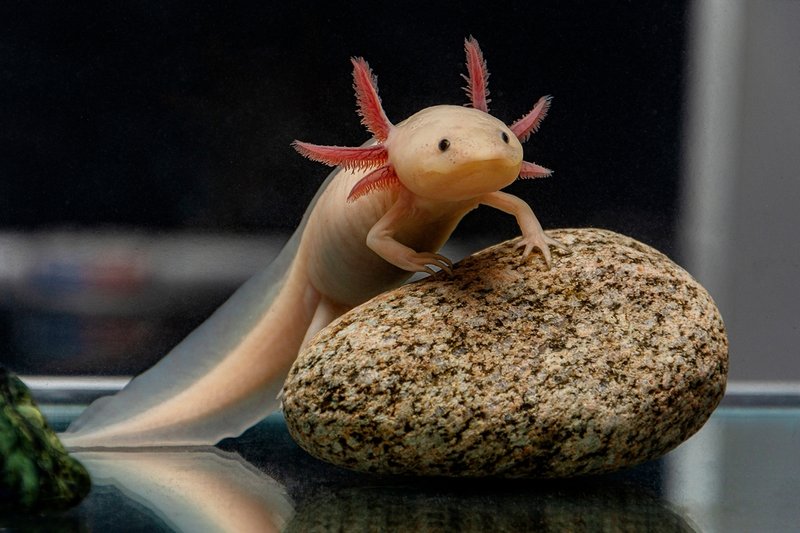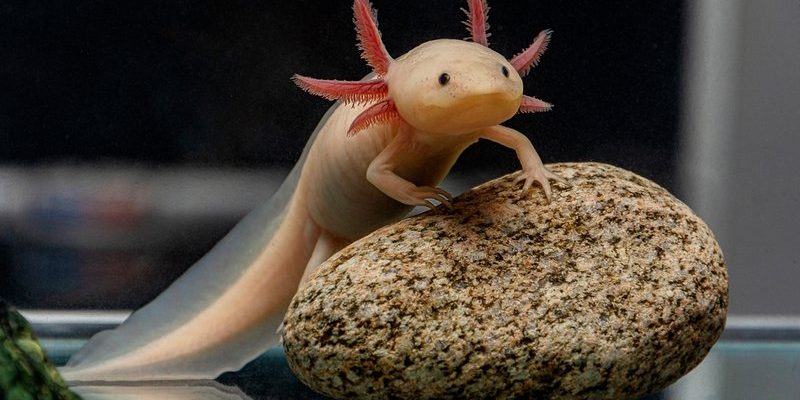
You might be surprised to learn that axolotls can regenerate lost limbs, have fascinating cultural significance, and even offer clues to scientific mysteries. Let’s dive into ten amazing facts about the axolotl that you probably didn’t know. Grab a cup of coffee and let’s explore this enchanting creature together.
1. The Regeneration Superpower
One of the most mind-blowing facts about axolotls is their incredible ability to regenerate lost body parts. If an axolotl loses a limb, it can grow back exactly as it was. This process isn’t just limited to limbs—axolotls can regenerate parts of their heart, spine, and even parts of their brain! Scientists consider this phenomenon to be a gateway to understanding regenerative medicine, which could have a big impact on human health in the future.
Think about it like a superhero story. Imagine if people could regrow their limbs after an accident or injury. The axolotl is like a real-life superhero, giving scientists fascinating insights into the possibilities of regeneration. This also sparks curiosity in many animal lovers who want to understand how and why these little guys can regenerate so brilliantly.
2. They Are Neotenic
You might be wondering, “What does ‘neotenic’ even mean?” Well, let me explain. Neoteny is when an organism retains its juvenile features into adulthood. In the case of the axolotl, they keep their gills and aquatic lifestyle even as they mature. Most amphibians transform into land-dwelling adults, but axolotls take a different path.
Picture a person who remains a cheerful child forever, playing in the water instead of heading off to a 9-to-5 job. This characteristic is not just unique; it helps axolotls thrive in their aquatic environment. Their permanent gills allow them to breathe underwater, making them perfectly adapted to their habitat. This quirky trait adds to their charm and mystique, intriguing everyone from scientists to casual observers.
3. They Have a Variety of Colors
When you think of axolotls, you might picture them in their most common shades: pink or white. However, there’s a whole rainbow of colors to discover! These fascinating creatures can be found in a range of hues, including black, golden, and even *leucistic* variations, which are pale with pinkish undertones.
This variety comes from selective breeding, especially among pet owners. Just like dog breeds can vary greatly in color and size, axolotls can also present an array of *visual delights*. Each color has its own story and appeal, making them fun to collect and care for. Who wouldn’t want a tank full of these vibrant little creatures?
4. Axolotls Are Critically Endangered
Despite their popularity and intriguing nature, axolotls face serious threats in the wild. Habitat loss, pollution, and invasive species have put them on the critically endangered list. Once plentiful in their native lakes, now it’s estimated that fewer than 50 of these charming creatures remain in their natural habitat.
This sad reality highlights the importance of conservation efforts. Many organizations are working hard to protect these delicate creatures and their ecosystems. By supporting these initiatives, we can help ensure that future generations will also get the chance to marvel at the axolotl’s beauty and uniqueness.
5. They Actually Don’t Have a Tongue
Here’s something that might surprise you: axolotls don’t have a traditional tongue like we do. Instead, they have a tiny, fleshy bump that functions differently from our tongues. They rely on suction to grab food, which they swallow whole.
Imagine trying to eat your favorite meal without your tongue! Instead of carefully chewing or savoring flavors, you’d just gulp down tasty bites. This makes their eating habits quite different than ours, giving them a unique twist in their culinary adventures. They primarily feast on worms, small fish, and even insects, which they catch with stealthy precision.
6. An Axolotl’s Heart Has Four Chambers
Did you know axolotls have a heart with four chambers? Just like humans! This structure allows for more efficient blood circulation, which is vital for maintaining their health. It’s interesting to think about how their heart is similar to ours, yet they live in a completely different world.
This unique heart structure plays a key role in their ability to regenerate. By circulating nutrients and oxygen efficiently, axolotls can heal and regrow body parts more effectively. If they were human, we might say they have a “heart of gold,” given how their physiology contributes to their remarkable regeneration abilities.
7. They Communicate Through Body Language
While axolotls don’t speak in a traditional sense, they definitely have their own way of communicating. Their body language can tell you a lot about how they’re feeling. For instance, if an axolotl is excited or curious, it may swim around energetically, flashing its gills and darting playfully.
On the other hand, an axolotl that feels threatened might stay still or hide behind plants. It’s fascinating to observe these subtle signals and learn how they express emotions. This non-verbal communication adds yet another layer of charm to their already intriguing nature.
8. Axolotls Are Popular Pets
Thanks to their adorable looks and unique traits, axolotls have become incredibly popular as pets around the world. They’re relatively easy to care for, requiring a tank with clean water and proper filtration. Just think of them as quirky little roommates who brighten up your space!
However, potential axolotl owners should know that they come with specific care requirements. They thrive in cooler water temperatures and prefer a well-planted tank environment. If you’re considering adding one to your home, make sure you do your research. They are fascinating companions, but they need love and attention just like any other pet.
9. They’re Resilient Creatures
Axolotls are surprisingly hardy and resilient in their environment. They can tolerate a range of water conditions, including changes in temperature and pH levels. However, they still require minimal care to thrive.
Their adaptability showcases their unique evolutionary traits. Even though they are critically endangered, understanding their resilience can help conservationists plan better ways to protect their habitats. It’s a reminder that nature has its own methods of survival, even when conditions get tough.
10. They Have Cultural Significance
Finally, axolotls hold a special place in Mexican culture. They are often associated with the Aztec mythology, where they are thought to embody the spirit of the god of fire and learning, Xolotl. In this mythology, the axolotl is sometimes seen as a guide for souls, emphasizing its importance in cultural storytelling.
Their presence in art, folklore, and even local legends adds depth to their story. Understanding this cultural significance can enhance your appreciation for these remarkable creatures. They are more than just pets; they are part of a rich cultural tapestry that spans centuries.
In conclusion, the axolotl is truly a fascinating creature with many unique attributes. From their superhuman regeneration abilities to their colorful personalities, there’s so much to love about them. So, the next time you see an axolotl, take a moment to appreciate all the wonders wrapped up in this charming little amphibian!

